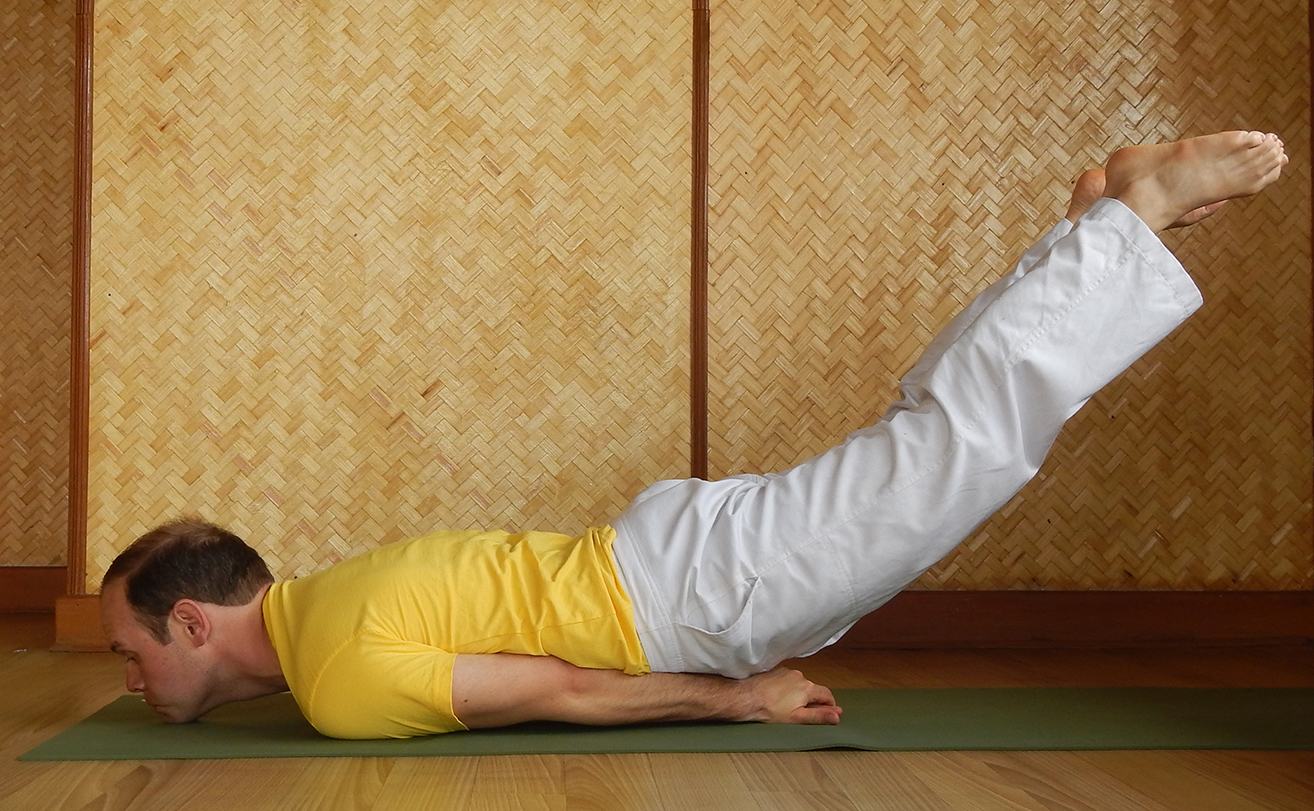This is the seventh posture in the sequence and the second backbend after Bhujangasana. This asana brings flexibility to the cerival spine (the neck) while strengthening and flexing the lower back (lumbar spine) and muscles around the sacrum. It is especially good if you spend a lot of time standing or sitting, and makes these activities more comfortable. Practice the Half Locust, raising one leg at a time, before coming into the full posture.

Benefits:
- Massages abdominal organs and improves sluggish digestion
- Promotes flexibility in the cervical spine
- Strengthens the arm and shoulder muscles
- Strengthens abdominal and lumbar muscles
- Reduces lower back pain and sciatica
- Produces body heat
- Develops will power
Instructions:
1. Lay on the abdomen with the chin on the ground. Bring the arms beneath the body, taking your preferred hand position (see tips below for hand positions). Bring the elbows as close together as possible.
2. Start with Half Locust. Inhale, lift the right leg as high as possible, knee straight. Do not twist the hips. Hold up to 15 seconds.
3. Exhale, lower the leg. You may repeat on each side, 2-3 times.
4. For the full Locust, first take three deep breaths, energizing the body and mentally preparing for the full lift.
5. On the third inhalation, lift both legs as high as possible. Push the arms into the mat, and squeeze the lower back muscles. Keep the legs straight.
6. If this position is strenuous, retain the breath. Otherwise, continue breathing to hold position longer. Hold at least 5 seconds and slowly increase holding time as strength develops.
7. Exhale, release the legs.
8. Relax in Makarasana.
Tips:
- There are many hand positions. The easiest and most advanced hand position is with tops of the hands placed on the mat. This is the easiest because it does not require much rotation of the shoulders and arms, though you get very little lift from the arms in this position. Conversely advanced students may practice this way to more exclusively use the lower back muscles.
- If you can rotate the hands so the palms and the inside of the elbows are towards the mat, you will have more lift when pressing into the arms. Here the hands can be flat and parallel, overlapped, clasped in a volleyball type position or two fists parallel. Practice whichever position is most comfortable.
- Keep the legs straight as much as possible to helps strengthen the lower back even if the legs to do not lift off the ground very far.
- If you are a beginner you can separate the legs to help come up more easily.
- As you advance your practice move to lifting the legs with the feet together.
- If you want to try and come up a little higher, bend the knees, lift the legs, then straighten the legs again.



